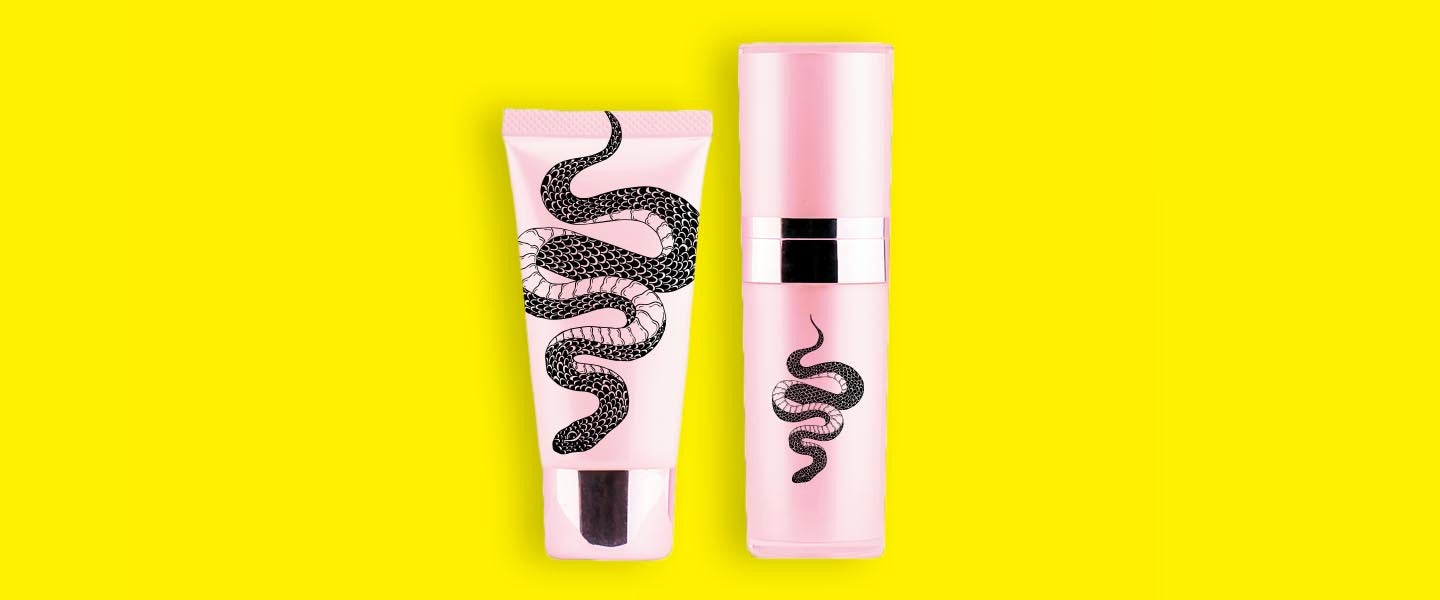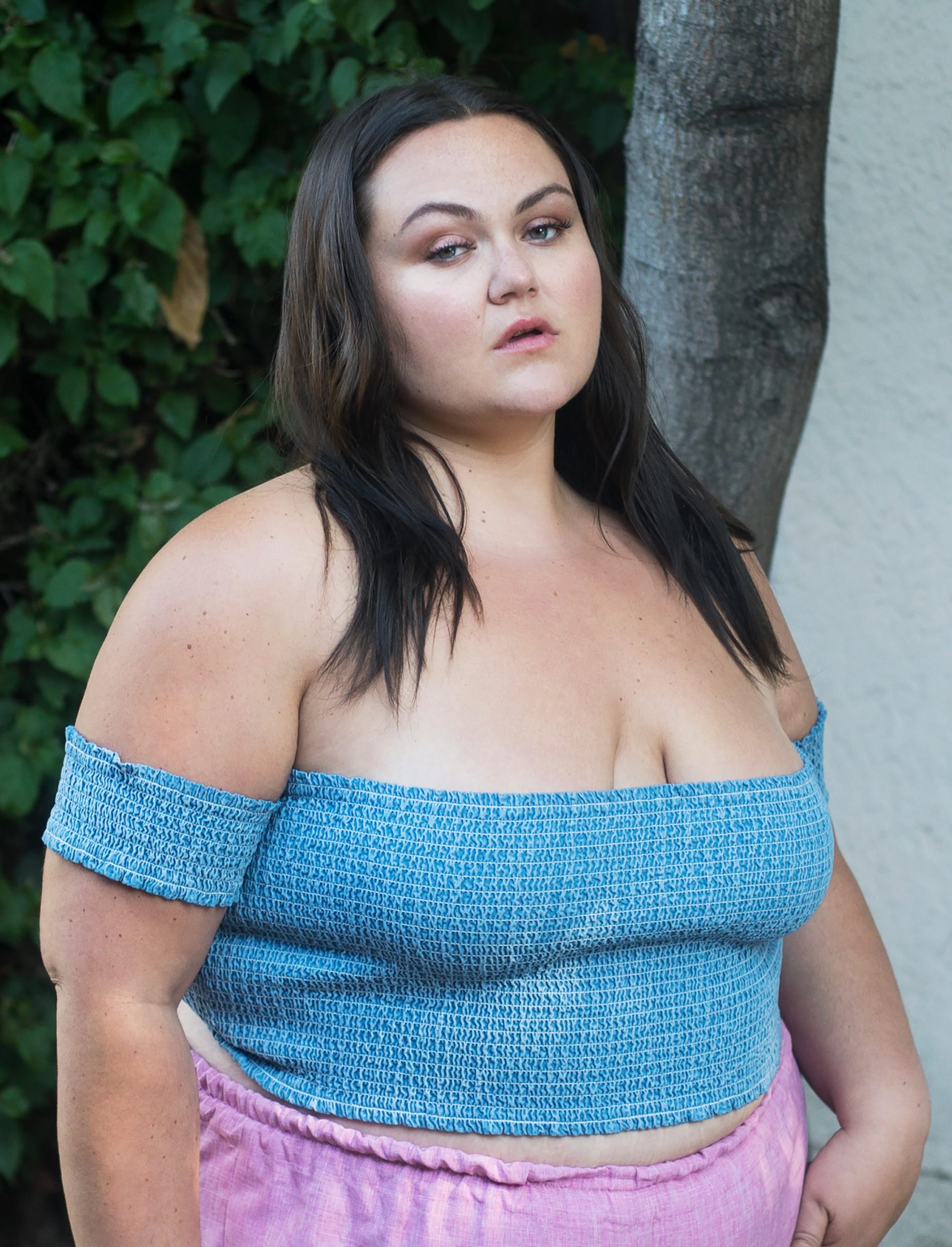Here’s a good TIL: Snake venom and Botox aren’t all that different. Because venom is a snake’s natural form of defense, it contains neurotoxins that paralyze victims by impacting their neuromuscular function. Botox, of course, also influences the neuromuscular system, preventing it from contracting and causing wrinkles.
In short then, for the skincare-obsessed at least, snake venom is more dream than nightmare. Which is the thinking behind Syn-Ake, a synthetic ingredient mimicking snake venom that’s being used in anti-aging skincare. It was developed by Pentapharm, the pharmaceutical research company in Switzerland whose motto is “Turning nature into life-saving solutions” and who claims that Syn-Ake is a “small peptide that mimics the activity of Waglerin 1, a polypeptide that’s found in the venom of the Temple Viper.” (More on the Temple Viper here.) Pentapharm further promises, “Syn-Ake has been developed as efficient smoothing and anti-wrinkle care particularly effective against expression lines by relaxing facial muscles.”
“To get a real Age Killing Effect, try SYN-AKE,” one Pentapharm campaign reads.
“I definitely thought this was actually snake poison when I first heard about venom products,” says esthetician and product-formulation expert Andrea Amez. “I also initially assumed it was a marketing venture more than anything else. But in the realm of anti-aging, this is basically the next best thing to Botox. Honestly, it’s sort of genius to mime an ingredient that enables muscle paralysis.”
I hate when a skincare product tells me to use it after cleansing but before moisturizing. I’m like duh obviously but do I use it before applying my snake venom or after I mist with my virgin blood
— Lorena Cupcake ?? they / them (@lorenacupcake) June 18, 2019
kpop idols: ya i don't really have a skincare routine i go to the dermatologist and get injected with snake venom and baby placenta every monday but my stans on twitter always paid for it other than that i just eat a lot of dairy and use cetaphil <3
— ? (@taedoriya) May 17, 2018
According to Amez, there are a number of skincare products containing Syn-Ake available on the market. The most affordable (at $14.80) is the “Buffet” serum by The Ordinary, which contains Syn-Ake in its peptide-blend.
The rest are much more expensive. “I’m most familiar with MBR, a German-engineered product line focused on high-active, high-potency ingredients,” she explains. “The MBR Cross Lift Ultra Peptide Serum is just under $450 and works to prohibit micro contractions. When paired with the MRB Liquid Surgery Serum, which costs $1,800, it’s a topical equivalent to Botox or even a face lift, putting the cost into perspective a bit. Interestingly enough, though, MBR doesn’t market the product based on it’s Syn-Ake at all. For MBR, it’s just another one of its state-of-the-art ingredients.”
Other brands are a lot less subtle. For instance, Rodial, a globally renowned skincare brand, has an entire line of Syn-Ake products — from Snake Neck Masks ($22), to Snake Serum ($94), to Snake Booster Oil ($76.50), to Snake Eye Cream ($59.50). The official product photography for these products feature them tucked in the curl of a snake’s body, with, naturally, the snake’s tongue out, to be extra sure to hype the “venom” of it all. It’s still, though, not as over-the-top as some of the Russian/Thai/Etc. cheaper versions:
Rodial also has a bee venom line (packaged in yellow) — e.g., Bee Venom Moisturizer ($200.95), Bee Venom Cleansing Balm ($81.65) and a Bee Venom Taster Kit ($56.52). In these products, however, the active ingredient isn’t a synthetic compound but actual venom. It, too, is based on legit science, as bee venom has anti-inflammatory properties, making it good for acne and capable of being turned into peptides with anti-aging benefits.
As David Yi, founder of the men’s grooming and beauty site Very Good Light, explains, “Bee venom (i.e., apitoxin) is what comes out of a bee’s stinger. Every bee sting has around 0.1 milligrams of venom, which causes inflammation of your skin with blood rising to its surface. That immediately signals to your skin to regenerate, producing collagen, which, in turn, creates younger, radiant and plumper skin. While it’s a wonder product — we lose about 1 percent of collagen every year when we get to 20 — we need to ensure bees are treated ethically. For this, you need to see how the venom is sourced and to make sure that it’s extracted without compromising, you know, the bees’ lives.”
Richard Walker, the founder of an expert serums company called skinChemists, told Refinery29 in 2017 the ethical way to do so is as follows: “The process works by attracting bees to a glass pane, which has a small electrical current running through it. The bees are encouraged to sting the glass, leaving behind small traces of bee venom but not losing their stinger.” (It’s crazy to add, but humans have also died attempting to try Goop-endorsed bee-sting thearpy methods for anti-inflammation; though, it’s important to note that this had nothing to do with the creams mentioned above.)
As for Rodial’s Dragon’s Blood line? That stuff’s derived from a tree, not a fantastical beast.
Or at least so they say.

